I got home around 11PM Friday night, from a week split between the UK and Finland. Stepping off the plane from Finland was almost identical to stepping off the plane in the Caribbean. While the temperature was only about 50*F in Paris, that would be approximately 50* more than it was in Finland. As people hit the doorway and stepped onto the air stairs, almost everyone reveled in the warmth.
Both Saturday and Sunday I had runs planned (in said warmth), but before I headed out I did a bit of ‘unboxing’ of various products. One such product was the Moxy Muscle Oxygen sensor, which I noted as part of my CES coverage.
The MOXY unit has a set of lights and sensors on the back of it, which you place against your skin (such as your thigh). The unit then emits near-infared light into the muscle, and can measure how much of the the hemoglobin inside each muscle is saturated with Oxygen. This information can then be used to better monitor muscle usage and recovery. It then transmits all this via ANT+ to various devices and applications.
The unit has two methods of ANT+ transmission. Well, actually three. But two core methods. The first is to use the ANT+ Muscle Oxygen device profile, which is fairly new. This is supported by a number of applications today, though mostly stationary focused (i.e. trainer apps). The second core method is to ‘fake’ a different sensor type. In this scenario it can work with just about any ANT+ device on the market, by simulating either an ANT+ heart rate monitor, or an ANT+ Speed/Cadence cycling sensor.
Below, I’ve taken my FR910XT and configured the Speed/Cadence sensor to use the Moxy for data.
Now, the challenge here is that as-is you then ‘lose’ a channel of data from that device. For example, if I am using running mode, I’d have to use the heart rate option, which means that I couldn’t have HR data. Within the cycling mode, it means that I’d lose speed/cadence data.
Ultimately, companies like Garmin could ‘fix’ this by adding support for the Muscle Oxygen profile to their devices. I would think that adding it to Garmin’s high-end devices, such as their Edge 810 or Garmin FR620 would make the most sense, since the cost of Moxy is high enough that those two markets align better.
Finally, it comes time to ‘install’ it on my leg. First, I put it in the little pouch.
Now, ideally I’d have just taped it to my leg with recovery tape or the like. But I didn’t have any handy. So I just stuck the whole thing straight on my leg:
Then, I simply let my running shorts fall over it – making it completely invisible.
With that, I headed on out. Well, actually, I headed on out twice. Once for each day. The first day I wasn’t testing MOXY though, but rather, doing more tests with the Bia watch.
The weather was perfect out for running – definitely can’t be beat!
When I finished up my run, I noticed this Radio France truck parked outside the church (Notre Dame). They often park along the side when they’re going to broadcast big events.
Which, seemed to initially be tied to the massive line of kids with signs headed into the church:
However, upon further investigation, it appears that it was just setting up and doing cabling for an event Wednesday night with the philharmonic orchestra. Which, should be pretty cool. I’m going to poke around at the site provided and see if I can get tickets. Hopefully my flight returning to Paris Wednesday will land on time.
In any case, distraction complete….
My run on Saturday was just a quick and easy 40 minute run. Fast forwarding to Sunday, it was a bit longer, about 11 miles or so. It was a recovery week, thus being shorter than normal for a long run. This was the run I was using Moxy on.
I headed back onto the closed roadway for a short bit as my starting point. I’ve yet to figure out the pattern for when said road is open or closed during the winter. During the summer it’s clear-cut, but in the winter some transportation maintenance worker must have some complex chart that lists temperature, weather, moon phases and frites consumption in order to determine if they’ll leave it open.
Speaking of things I don’t understand: It’s how much clothing the Parisians wear during running.
Take for example the individual above. They were wearing long running tights, some sort of undershirt, a running coat, gloves, a tight-fitting scarf, and a hat.
Let me point out that it’s 50ºF and mostly sunny. That’s 10ºC for you metric types. Yet, this was completely normal. Almost every person I saw had equal amounts of clothing on. Holy cow! I meanwhile, was in shorts and a t-shirt. It was like early fall running weather, beautiful!
As I made my cut over into the Bastille area, I saw a bunch of police quickly cutting off traffic. At first I figured there must be a protest around the corner (very common). But in actuality, it was a massive roller-blading group coming down.
It stretched a good 800-1000m long, almost all the way down the canal. I’m not quite clear who or what it was affiliated with, as typically the roller bladders have their roll around the city event on Friday evenings.
In any event, I kept on going, soon jumping up on the elevated trail system that gets me all the way to the park without having to deal with a single street intersection. The whole stretch is roughly about 3.5 or so miles long, so about 6K in length. You can see the street down to the right, and the elevated system to the left that I’m on.
It even cuts through buildings, as seen straight ahead. It also occasionally goes under buildings too.
Back to Moxy, I had configured it on the FR910XT in cycling mode, and then just tossed that in my pocket as a secondary GPS unit. It was configured against the speed (SMO2) and cadence (TBh) metrics, where speed is shown in the upper right hand corner. Though, it ended up being a bit lower than I expected. My HR is shown in the upper left, and time in the lower left.
I meanwhile plunked my way around the park, making one massive loop. Tons of people out, as one might expect.
I’d eventually finish at the Château de Vincennes, which is on the most northern side of the park.
Below, my finishing shot:
From there I’d jump in the metro (subway) for a quick 10 minute ride home. The best part is that it’s the start of the line, so you don’t have any problems finding a seat.
From a data standpoint, here’s what things looked like on the Moxy side. Below, my muscle oxygen level over the course of my run. I haven’t used it enough to understand why the first portion seems really jumpy, whereas the rest is fine. The very end is jumpy because I was doing some short sprints. But, that’s sorta part of the fun of it – understanding how the data correlates and what to do with it.
Finally, on two unrelated ‘what I did this weekend’ fronts. First is that I deconstructed our Christmas tree. Unfortunately, we’ve been travelling so much the last few weeks this was the first time I had a chance to do so. So I spent considerable time taking everything off the tree and putting it in a giant pile on the right of the tree (which, I’ll leave for The Girl to deal with).
Then, I took said prickly tree out the house, down the stairs, wrestled to get it in the elevator, and then dumped it on the street. Well, next to the place where we place garbage for pickup in the morning.
Of course, in doing so, I left a long trail of tree parts and needles. I think it took over an hour to clean-up all these said needles, working backwards from the building front door through the hallway, to the elevator, up the elevator, and then up another flight of stairs, then into the house and ultimately near the window.
With annoying basket-weave style carpeting that our landlord has, the needles find a relatively permanent home that the vacuum struggles with.
Finally, to wrap things up, post-Sunday activities I headed out to the airport.
You may have remembered last week’s news item about an Uber car (like a taxi service) in Paris getting attacked. Well, that reminded me I wanted to sign-up for Uber. As I’d never tried it before and all the cool kids say it’s cool. So I did.
And holy cow, pure awesome. I was able to track the car from my phone as it came to my house to pick me up. I actually timed it to the second from when I stepped out of the front door the car was pulling right up.
It was about $10 more than usual to the airport, but that might have been because of the traffic. Kinda hard to say. Loved that the app just charges my credit card behind the scenes. Beautiful.
For those curious, I often take the RER to the airport, but if I’m running behind and it’s not rush-hour, I’ll do a cab to mitigate uncertainties with the RER B trains (so many stories…). This would be one of those cases.
Finally, after a short 45 minute flight, I’ve arrived in Frankfurt. I’m here for a few days for some meetings.
Not really the city, sorta half-way between the city and the airport. Basically, the middle of nowhere. No exciting ice-fisherman pics this week. Just me, in a hotel room, with some hotel Haribo gummy bears watching the NFL playoffs. Seahawks start in 8 minutes! Sorry Patriots fans, didn’t quite work out for ya there.
With that, thanks for reading!
FOUND THIS POST USEFUL? SUPPORT THE SITE!
Hopefully, you found this post useful. The website is really a labor of love, so please consider becoming a DC RAINMAKER Supporter. This gets you an ad-free experience, and access to our (mostly) bi-monthly behind-the-scenes video series of “Shed Talkin’”.
Support DCRainMaker - Shop on Amazon
Otherwise, perhaps consider using the below link if shopping on Amazon. As an Amazon Associate, I earn from qualifying purchases. It doesn’t cost you anything extra, but your purchases help support this website a lot. It could simply be buying toilet paper, or this pizza oven we use and love.

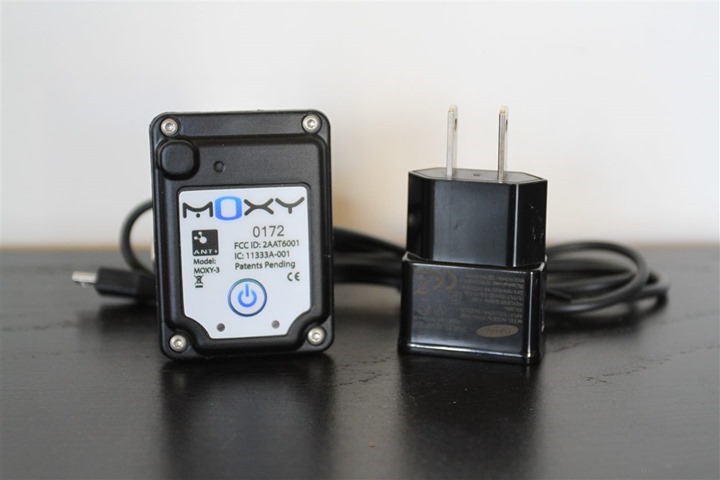
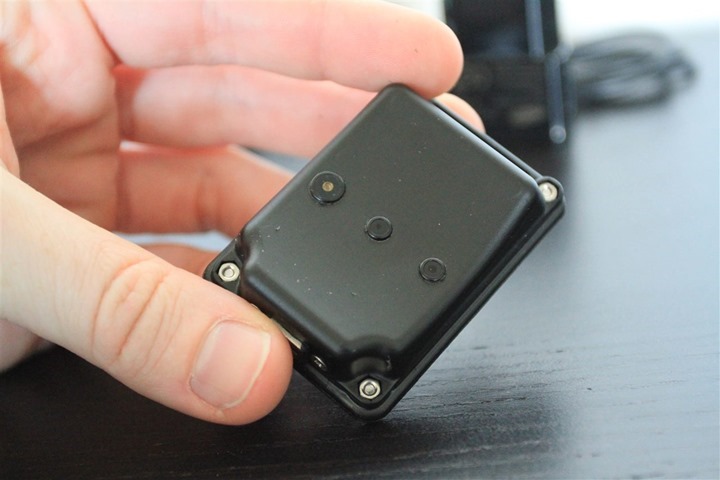
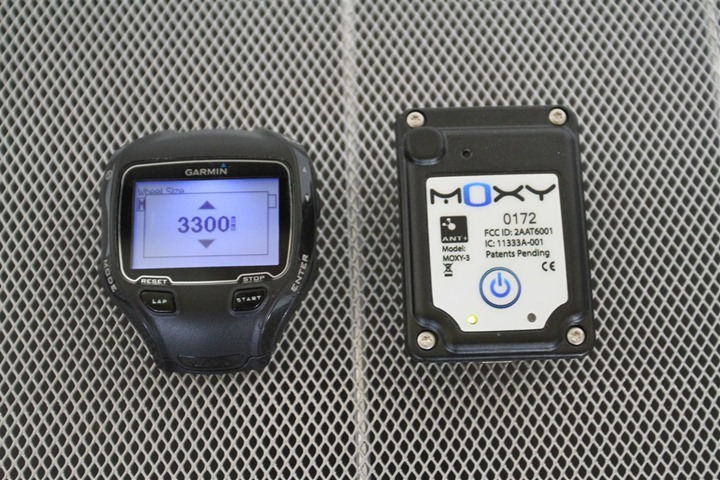
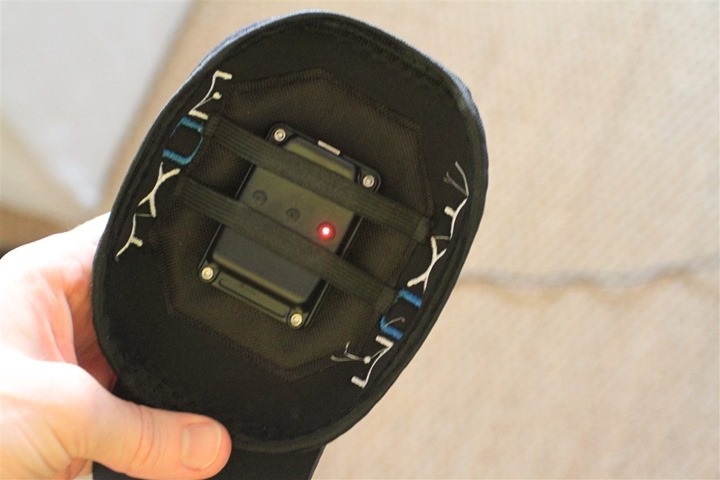
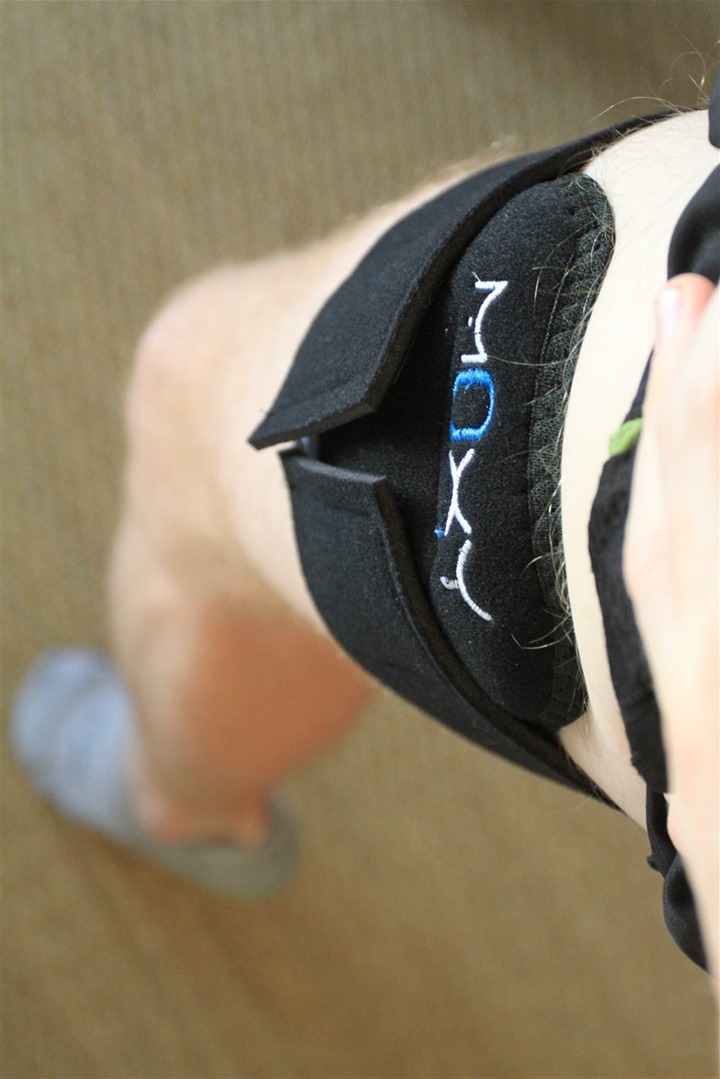
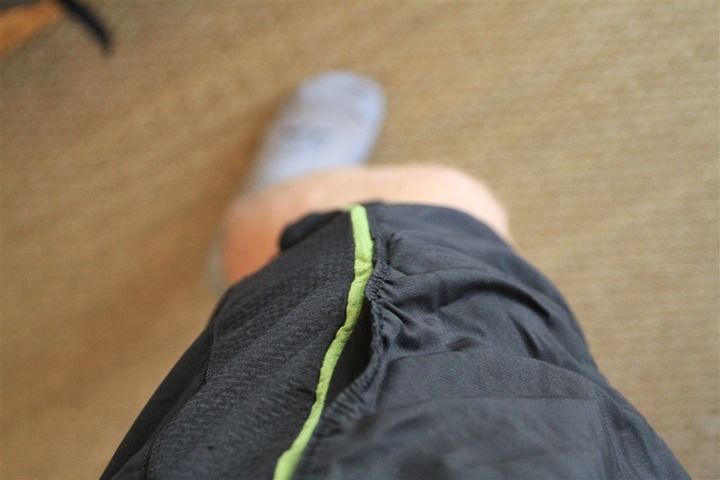

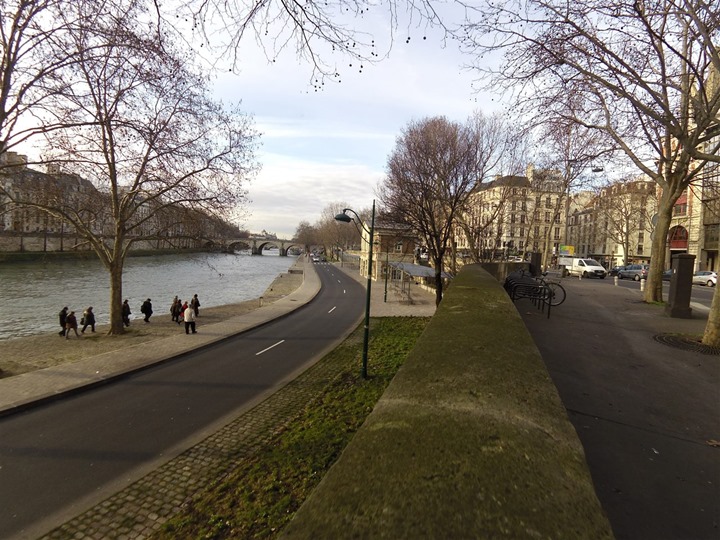




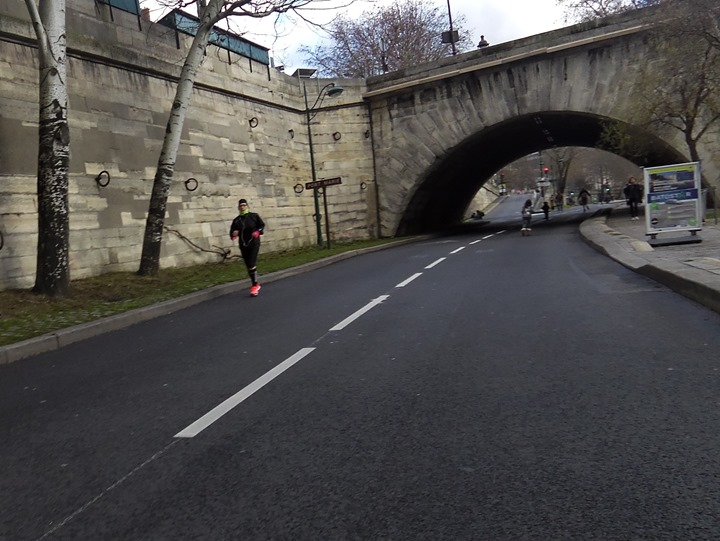




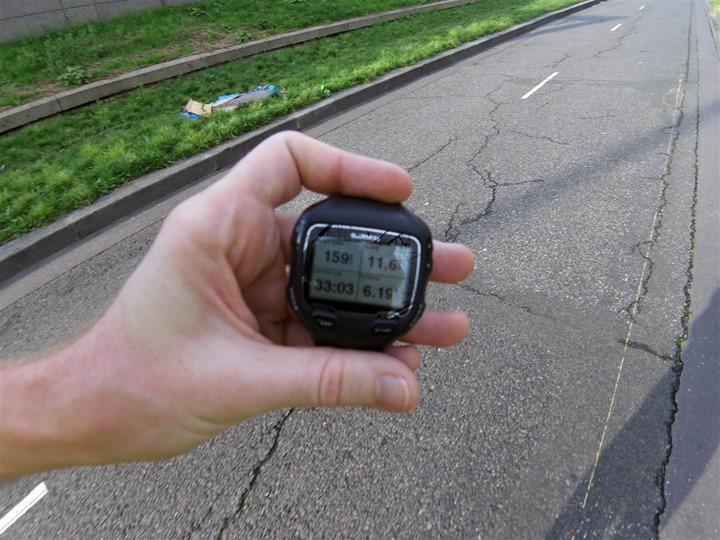


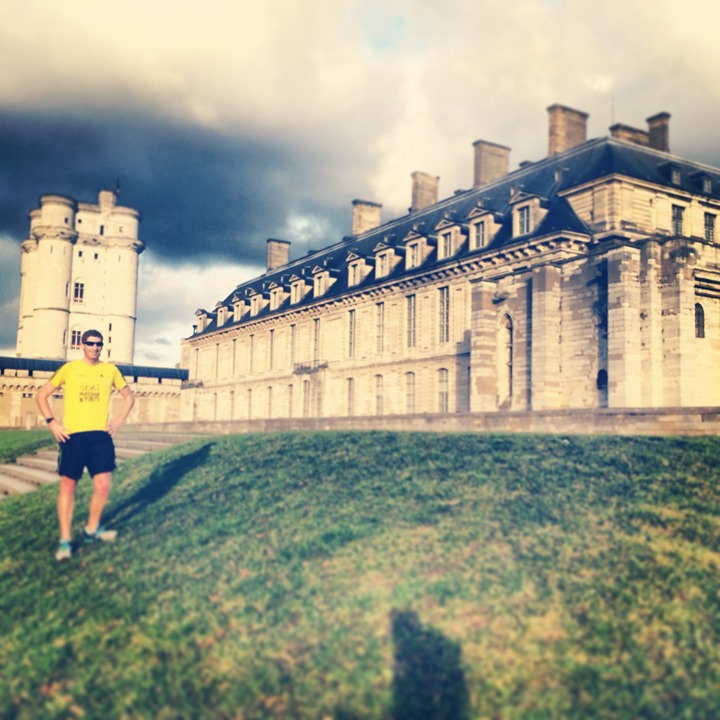







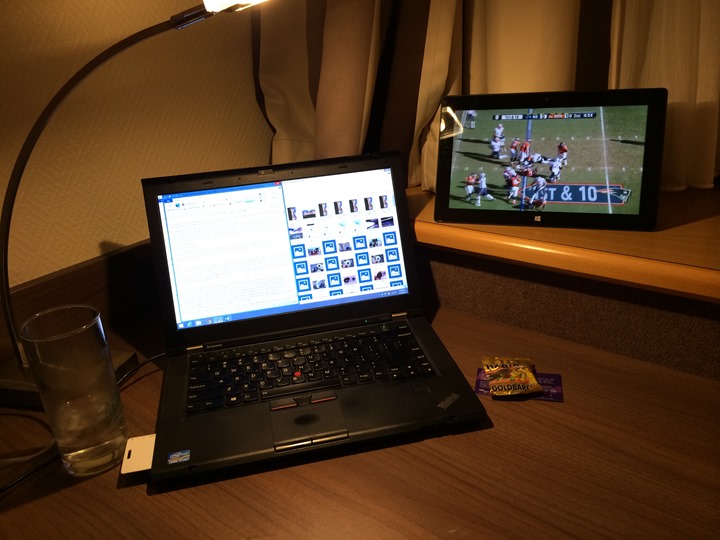
















I enjoyed your post very much. Especially the distraction story. lt was if I was with you for the run. haha :)
Hi Ray.
You can use this : link to handicap-international.fr, a christmas tree bag tu handle with.
Hi Ray,
there are actually two rollerblade meetings each week in Paris: one is for “quick” people, on Friday nights, and the other one is more family/kid oriented (and thus much slower). It starts from Bastille on Sunday afternoons. Link to their website here: link to rollers-coquillages.org
Ahh, very cool, I never knew about the Sunday one. I see the Friday night one go bye my place every few months or so (route varies weekly). That makes sense that the Sunday one is aimed at families, as this had a fair number of strollers and the pack was moving much slower than the Friday one.
Two things about french runners being too covered: either they dont sweat enough or they are not use to minus temp’ as you are.
Welcome to Frankfurt. Halfway between the city and the airport sounds like my office location…
Where are you exactly? Maybe we can arrange a quick meetup or a runaround (although it’s not really looking good on my side)
I’m staying at the Sheraton Congress, but working in some of the nearby buildings about a track lap away.
Any ideas what the price range for the MOXY will be?
Also I find here in the UK even at 8ºC – 10ºC people always seem way to over dressed. I wouldn’t make it a few miles without having to strip down a bit.
It’s approx $800US. I can’t remember offhand if it’s $800 or $899. Either way, it had an ‘8’ leading it.
Obviously, at that price it’s heavily aimed at coaches, athletic training facilities (i.e. the OTC), and similar. It’d be unlikely that a single athlete would otherwise use it day after day.
Hi!
Next year you could celebrate St.-Knut-Day (last day of christmas in Sweden, Norway and Finland) and throw your tree out of the windows as IKEA suggests… :-)
It’s funny, I heavily considered tossing it out the window. The challenge was that room is on the 5th floor, which is actually the 6th floor if you convert it to the US system. Either way, it’s a heck of a drop. My thinking was something like 2AM and doing it then. But it’s really hard to see over the ledge, and I’m not sure yelling ‘TIMBER!’ translates like it would in English. It’d be my luck that by time I went down there after throwing the tree I’d find some little Parisian dog got impaled by my tree.
You could give a St.-Knut-party like I did several times in my former living community. The highlight would be the tree thrown out of the window, while your guests secure the pavement (and the street if applicable)…
Woh… Scrap that idea then.
Thanks for sharing Ray. Enjoyed reading your post, A little miffed purchasing the 800 then came the 810 but I’ll try Moxy on the 910. Marc
Oh, just to be clear, you can do Moxy just fine on the Edge 800 as well. In fact, just about every Garmin unit ever will support it – since the heart rate ANT+ sensor and speed/cadence ANT+ sensors are widely supported (even in handheld hiking units).
Be aware that sending the data over the Heart Rate profile is less nice than the Speed & Cadence profile. For one thing, you only get SmO2 data and not THb data. That’s generally fine if you’re using it to guide intensity during a workout, but if you’re doing some type of assessment, you would want the THb data too. Second, we had to add 100 to the SmO2 data to get it to work properly on the heart rate profile. Most watches have a filter on the heart rate display so they don’t display numbers lower than about 30. Since SmO2 ranges from 0 to 100, we just added 100 to the data before sending it over the Heart Rate profile and the user needs to remember to ignore the leading “1”. A displayed 159 bpm really means 59% SmO2. Nudging Garmin to add muscle oxygen to their watches is the best solution, but the hacks work fine if you are aware of the limitations. No matter which profile is used for transmission, the data is also stored on the sensor.
Loved the view of the park…last summer biked all around the forest on your recommendation
Thanks for the report, the Virb really takes nice pics. I’ve given up on the Sony AS30 for that due to the button placement (as you’d pointed out) but have just received the Mobius Cam and it’s quite a bit more convenient.
Uber sounds pretty cool indeed, will have to try it out.
Oh, are you signed up for the Vincennes “Elite” 10k ?
Hey Ray, do you have a Surface?
Yup. A Surface RT. Sorta wish I had gotten the Pro instead. But, it was great for watching the Seahawks win. :)
If you’re running with your phone then why not just use one of the phone apps that can handle the moxy directly?
Offhand, I’m pretty sure said Moxy-capable apps are only on Android, not iOS yet. And while I could have used a phone app with the ANT+ connector and done just SPD/CAD, that meant I had to fish out both the ANT+ adapter as well as the 30-pin to Lightning adapter.
And, I wanted to show how it worked on a Garmin device, since that’d have the widest appeal.
I know you love your iphone but thought you had an android device that could be used. Do agree that garmin should support it but until then….
I have the S3, which I could use, and definitely will as part of any full in-depth review. But I didn’t feel like two devices (phones), and I was using the iPhone and some apps there to do some other product testing.
The only phone app I’m aware of that uses the Muscle Oxygen profile so far is IpBike for Android phones. The Speed & Cadence options works for phones the same way it works on watches.
You need the beta version of IpSensorMan to get the MO2 profile working in IpBike.
Does blood oxygen monitoring have any training value? I get the impression that device pairing is dodgy, data points are erratic and actionable information is sparse. Am I being overly negative on a pretty pricey training tool or is there is a killer feature I’m overlooking?
You do realize this post isn’t the full review so erratic data points (ever look at heart rate data which can look just as bad) and there isn’t any attempt to cover how actionable it is (again, same as heart rate, if you don’t know how to use the data a review of HR data from a run can look useless too). So yeah, pretty negative for technology that is very new.
> Does blood oxygen monitoring have any training value?
It seems like there are all these metrics being chucked out these days not because they offer any discernable benefits but because they can be. Is it because the market is too immature or will things start getting joined up to offer meaningful and usable data. I’ll be honest Garmin’s Run Dynamics are nothing more than pretty pictures to me unless anyone knows how to interpret them into a way that changes my running to be more efficient.
Anyway…
Regarding pairing, I wouldn’t say it’s “dodgy” at this point. I think it’s simply a case of other devices having having to catch-up. If I pulled up Peripedal, it’ll seem much more logical.
As for erratic data, it again, depends. If I look at the data at the end of the run – that’s actually logical – I was doing sprints. If I look at the data at the beginning, that’s less so. Is it because I did something wrong? Or am I not understanding the data? Or was there some other issue? I don’t know. That’s why I test things long term, to understand. I try to let folks see some of that process through posts like this. Which, can be challenging, because people often come to incorrect assumptions on a product that may not be complete yet (or, my thinking on it may not be complete).
Finally, as for usefulness of the data (this, and other metrics at large). I think there’s two things to consider. Some metrics will take time until ‘guidance’ can be developed. Take power meters for example, for mainstream use, that’s really only ‘clicked’ in the last 5-7 years in being widespread and well understood. 7 years ago, folks would have probably said the same thing as people say now about various new metrics. Will all new metrics being thrown at us ‘matter’? No, some won’t. Or perhaps, they won’t matter for 95% of the population, but have use for other areas.
The second thing to keep in mind is that technology is moving quick enough where some metrics that used to be ‘facility’/coach driven are now being put in the hands of the end-consumer. Take VO2Max. Previously, this was done at a facility with expensive equipment – largely with the goal of determining optimal training zones (not so much to find ‘your number’). Now, companies like Polar have been doing some guesstimates of VO2Max for years, but it’s becoming more and more accurate across the board, and the parameters going into it are becoming more detail.
But, what’s lacking is the ‘guidance’ piece that used to be there from a testing facility. So, the metrics may indeed be the same that were given in specialty facilities, but just lack the context of how to use them. Over time, I expect that context will be added by a variety of sources (coaches, sport scientists, etc…). For example, in the case of Moxy, they’re doing coaching seminars in conjunction with entities like Training Peaks on how to use the device with athletes. Given the device price point, that’s a logical place for that to occur.
Just thought I’d point out power meters are much older then 7 years old and more like over 25 now. SRM released their first power meter in 1988 link to srm.de
Of course, the key part of my statement was “being widespread” – which didn’t really happen until rather recently.
How about we place the responsibility on Moxy and Garmin for actionable data?
When Nintendo releases a new console they also try to release a few killer games that only work on their platform so that I have an incentive to get on board with their new system. When Garmin and Moxy release a way to collect new kind of data they should make clear how the end user can benefit from it. The better job they do of that the more units they will sell.
Another good example relating to the usefulness and actionability of newer metrics would be the left/right power balance info from Garmin Vector. Intuition tells you that this info has to be useful (and actionable) somehow, but at this point it’s not entirely clear just how to make meaningful use of it.
Be careful of the sugarless gummy bears! The Amazon customer feeback is priceless.
link to amazon.com
@Niederrad? I’m working in the City, if you need someone for a runaround email me, would be my pleasure. Pace between 4-5min/km along the Ironman course and City :D
Great read!
Thanks for the great post. Really enjoyed reading it, distractions and all :)
lifehack for the christmas tree:
Bundle the tree in an old sheet. it will keep all the shedding prickles in the sheet. a lot less to clean up and easier on the hands.
cheers,
joe
Hanukkah menorahs are so much easier to deal with ;)
FYI when I lived in Paris (a while back fair enough) there were 2 roller adventures weekly. Friday was for the more “advanced people (especially outside of summer) and sunday was for the slower/beginner people…
I see you are a frequent touchpad user too, much better for your wrists compared to using a mouse. The moxy is an interesting device. Looking forward to more data/review on it.
This is really fun to read. Mainly because I am from Switzerland so like the picture, but as well because I work since close to 20 years with this ideas and with it to use bio markers to add to the understanding on how we bring energy to the different body parts.
I work since the beginning with the MOXY to use and compare with other great NIRS devices.
The very low price of MOXY will be in the very near future a real game changer in the exercise world and how we define training intensity , duration and numbers of repetitions.
We use live info in top ice hockey player or any sport to see what we never could see before as we never had any direct physiological informations. I am just in the airport flying back to Canada from California , where we had the first official MOXY seminar for People from China, USA ( olympic center, Red bull high performance and Canada ( swimming coaches ), as SWINCO in europe launched this new direction in different Countries in europe a while ago. Fascinating times and discussions are ahead of us. If you can sent me the MOXY csv file you downloaded from the MOXY app I could speculate and explain what we see during your run in Paris. Thnask for the fun and great info and objective assessment.
( by the way the tape is a very great suggestion, as that is how we use it for sports like running.
Juerg
Hi All-
Moxy has sent over links to two (free) eBooks on how to use the data, including one on cycling. Further, there’s a third book coming, which focuses on how to use the data in running. They’ve sent me said book in final draft form, and they expect to publish it up soon. I’ll post here once they do.
Intro to Moxy: link to hub.am
Cycling: link to hub.am
Enjoy!
I read all the responses hoping maybe somebody would ask if you had any new thoughts on the Bia? So any new ideas, thoughts, impressions different from your preview?
Yup, see here: link to dcrainmaker.com
Haaaa… I guess I meant since your hands on :) I had previously read both the Preview and the Hands On.
That was just only over a week ago. ;)
They fixed the offset item for France, but really the next point of note will be new firmware updates. You likely won’t see any further detailed thoughts from me until spring (March-April) once they have all the features implemented.
PaO2 monitors are extensively used in medicine and a well established technology. They measure % O2 saturation of skin capillary Haemoglobin. The physiology is well described (look up oxygen desaturation curve), and muscle O2 consumption won’t noticeably effect it (stopping breathing will, but try voluntarily holding your breath and you’re unlikely to get it below 90% before your CO2 rises (which isn’t measured) and you start breathing again) and most of the drops below 90% are likely due to measuring error (ie loss of effective contact). Doesn’t have much (=any) of a role in exercise medicine or sports training, so this has to be WAY down the gadget list…
Which is why they aren’t measuring PaO2 and measuring deeper in the muscle
Is this the Eli Blog or DC rainmaker blog actually??? kind of annoying seeing someone answering all questions instead of the person who wrote the review (which I enjoy a lot everytime by the way)
Eli makes already the great point. There is a fundamental difference between SpO2 as nicely and great explained by srobert and SmO2.. As well the example in srobert is a really nice example. Holding breath and therefor moving your O2 Diss curve to the right will help to release O2 from Hb and will make it somewhat more difficult to load O2 to the blood. The loading problem is what you see on the SpO2 sensor. the unloading advantage is what you will see on the MOXY.
As srobert points out CO2 is one of the driving forces in allowing easier O2 remove from the blood to the tissue. Another one would be temperature , another one pH shift , CO2 increase and a specific hormone.
With MOXY you in fact can see some of this reactions live and you can choose intensities, where you can manipulate your respiration to in fact practice lower desaturation. As well srobert points out many many great studies out ther who use SmO2 to assess physiological information. Short track speedskating and differeences in desaturation of the inside and outside curve leg, as one of many fascinating results.
Wingate test and the surprising observatio,n that in a so called “anaerobic” load the aerobic comp[nent like O2 is often much better used than in a VO2 max test. Much more to come that is for sure.
I found that all Europeans overdress. Living in Denmark I was amazed by the amount of spandex and layers on even the most tame Danish winter day. If its not below 0C – I’m wearing shorts!
Next time, wrap your xmas tree in a piece of bedclothes before dragging it out. A lot less vaccuum cleaning of the carpet.
any peer reviewed literature on this?
Just a tip from another Parisian Uber customer…
I use UberX (option at the bottom of the app) to go to the airport
40 Euros from anywhere in Paris to CDG – cant be beaten
They are not the same cars as the ‘normal’ uber. Typically a Peugeot 508 for example
But as always clean and great service
Wow, very cool – thanks for that tip. I was trying to figure out the exact differences, but indeed – 40 Euros can’t be beat at all, since the cheapest I’ve ever seen a taxi bill is exactly 50 euros. Will use it Monday morning!
How is this different from BSX Insite (link to trainbsx.com) except for being 6x cheaper?
This is from moxi’s website:
“SmO2 gives the user a real-time view of muscle
oxygen utilization and delivery from the desired active sites. This differs
from metrics such as blood lactate, which have extended lag times and
are systemic in nature rather than muscle specific.”
Personally, I train sporadic with no real insight on when I should train hard vs take a day off unless I feel like crap. How can these devices make me train smarter?
Hi Joel,
This is Roger from Moxy.
I invented the Moxy measurement technology so I can comment a little bit about what I see as the differences between Moxy and Insight. All my comments should be interpreted as what I know about Moxy, and what I’ve inferred from reading about Insight. I haven’t actually seen an Insight device. Also, I’m an engineer and not a trainer so my ideas on training are on thinner ice than my technical remarks.
Both sensors use near infrared light for the measurement. The core physics is that oxygenated hemoglobin and myoglobin absorb light differently than deoxygenated hemoglobin and myoglobin in the near infrared region of the spectrum. Also near infrared light can travel through tissue for a distance of a few centimeters. Both sensors have near infrared emitters and detector(s) to measure light that has been scattered through tissue and has been altered by this physics.
The Moxy measurement algorithm is designed to measure the hemoglobin in the capillaries of the muscle and the myoglobin in the muscle. It is designed to minimize the sensitivity to the skin and fat layers and maximize sensitivity to the muscle layer. The Moxy reports 2 metrics. The first is SmO2. This is the percentage of hemoglobin and myoglobin in the muscle that is carrying oxygen. It’s on an absolute scale from 0% to 100%. If you apply a tourniquet to your upper arm and measure on your lower arm, it will eventually read 0% (or very close to 0%). It will shoot back up close to 100% when you quickly release the tourniquet. We say that this is an “absolute” measurement in the sense that a reading of 50% actually means that half of the hemoglobin and myoglobin is oxygenated.
The second Moxy measurement is total hemoglobin (THb). This is the amount of hemoglobin and myoglobin in the optical path of the sensor. There are lots of factors that can affect the THb reading like fat layer thickness, hydration level, and blood volume in the muscle. We don’t know the values of all of the factors, but it’s often reasonable to assume that the big contributors like fat layer thickness and hydration are reasonably constant over the duration of an exercise so that any changes that we observe in THb are due to blood volume changes in the muscle. We say that the Moxy THb reading is “relative” in the sense that is only indicates changes in blood volume rather than actually reading an absolute tissue hemoglobin concentration.
When I read about the Insight and look at the layout of the optics, it looks like the Insight isn’t going to measure SmO2 on an absolute scale and I can’t tell much about what it’s going to do for Total hemoglobin.
The price question is a good one. There are a few differences that make the Moxy cost slightly more that are directly related to measuring SmO2 on an absolute scale. Moxy has 2 detectors instead of 1 and Moxy has a different emitter arrangement. On the flip side, the Insight has some motion detectors that Moxy doesn’t have. In the grand scheme of things, these are pretty small cost differences. My guess is that the biggest driver for the price difference is production volumes (actual or anticipated) and sales channels.
Now for the question of how does the technology in general help you train smarter. The answers to this are just now starting to be developed. For Moxy, we have a training matrix to help get a look at where we think this is going. On one axis, we have the sport types of Endurance, Acyclic, and Strength. On the other axis, we have the uses of Assessments, Guiding Intensity, and Competition. Matrix
For Assessments, measuring SmO2 and THb during certain types of training protocols allows us to infer which physiologic system is limiting performance. Primarily, this identifies if the cardiac, respiratory, or muscular system is limiting performance but more detailed analysis is possible too. This allows the trainer to structure a program to target the limiting system. This still requires a very knowledgeable trainer. If you are feeling like crap because you killed your respiratory system yesterday because it is your limiter, you might be better off doing cardiac and muscular training and letting your respiratory system recover.
For guiding intensity, you can use SmO2 and THb to indicate when a system is starting to get overloaded. For example, you can measure SmO2 on a non-involved muscle such as the arm of a cyclist to see when the body starts to constrict blood flow to uninvolved muscles. This might be a sign that you are approaching a Cardiac Output limit.
For competition, we have trainers that are looking at monitoring how fast hockey players recover between shifts. If you see the SmO2 is taking longer to recover, you might put in your fresher 3rd string and give the first string guys some more time.
I wrote a short blog series about training intensity zones. Part 8 talks about some of this in a little more detail. Part 8 Blog
My impression is that the Insight is going to take a simplified approach to using the NIRS data for training. By correlating the NIRS readings to lactate they eliminate some of the technical difficulties of measuring SmO2 on an absolute scale and they put the data into a format that is more familiar. However, the simplification loses some of the value. A lactate surrogate may be useful to guide intensity, but understanding how SmO2 and THb respond is critical to getting the full value of Near Infrared measurements.